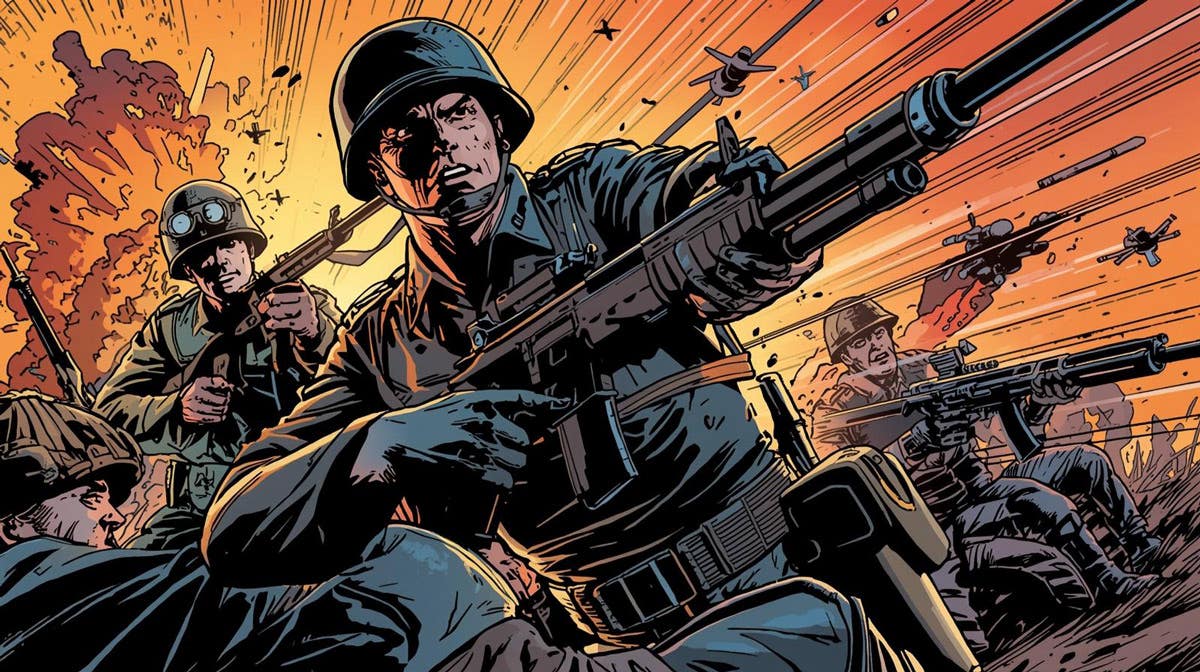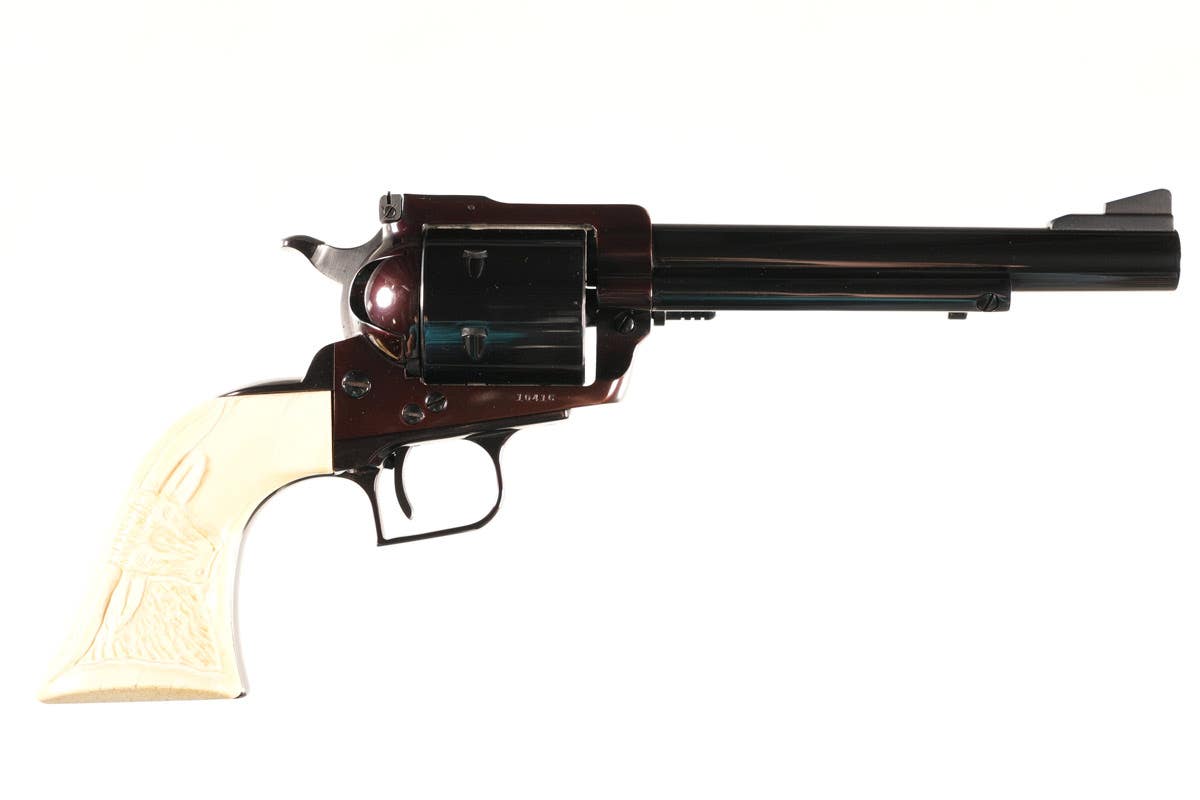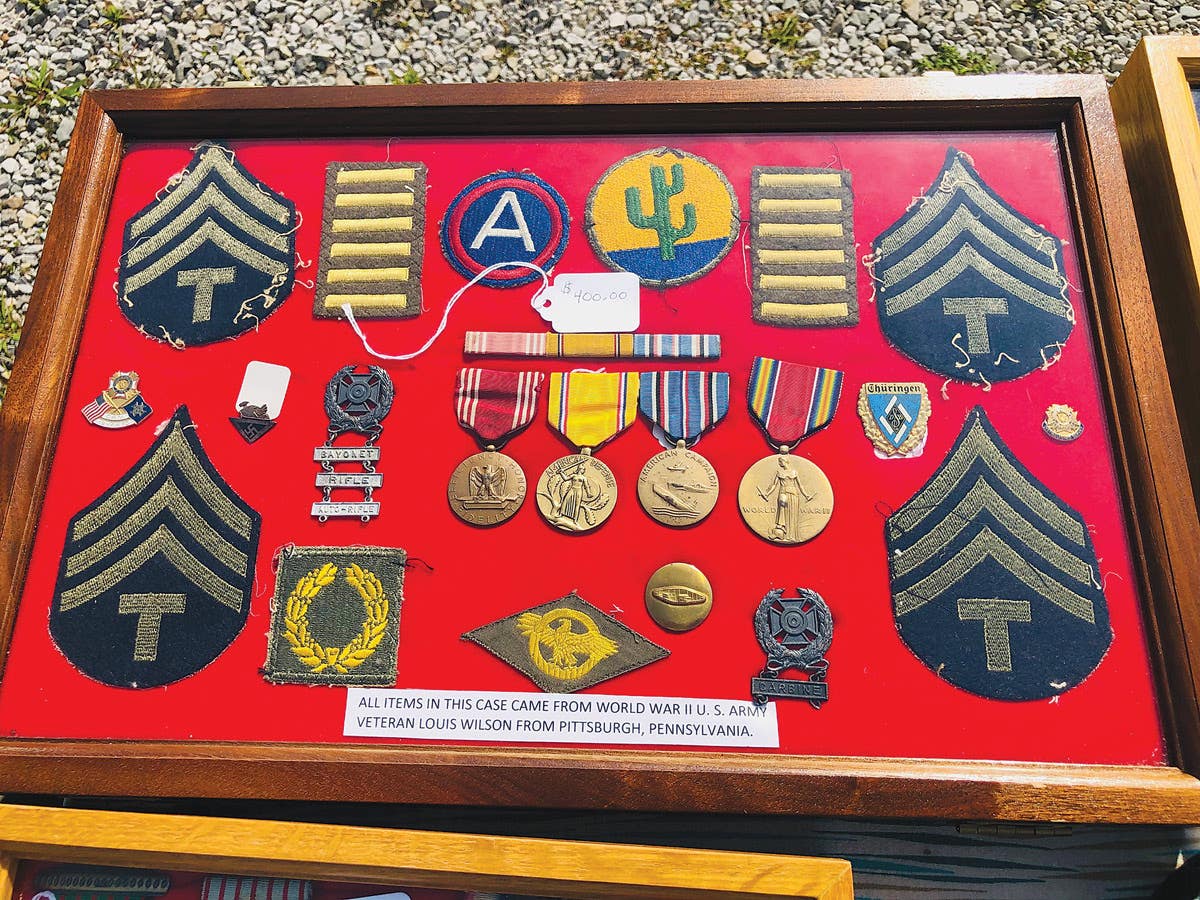More than 5,000 lots sell at Hermann Historica oHG
More than 5,000 lots from all specialist areas represented by the auction house – antiquities, arms and armor, hunting antiques, orders and collectibles from all fields of history and military…
More than 5,000 lots from all specialist areas represented by the auction house – antiquities, arms and armor, hunting antiques, orders and collectibles from all fields of history and military history – came under the hammer in the 69th auction of Hermann Historica oHG in Munich.
Fine antique and modern firearms
The fine antique and modern firearms section reported extremely encouraging results. A very early masterpiece, an imposing double-barrel wheellock puffer dated 1598, probably from Saxony, bore testimony to the fine art of gunmaking. Entirely covered in bone inlays, the whole weapon was embellished with lively hunting motifs and mythical creatures. The exceptionally decorative and highly interesting piece changed hands for its reserve price of 35,000 euros. Another object of outstanding quality in beautiful, largely untouched condition, which was forged between 1802 and 1809 by Jean Lepage (1746-1834), the most renowned gunmaker of his time, whetted buyers’ appetites with its finely carved wooden stock, its cut and engraved iron furniture and the rich gold décor on both barrels. Despite being modestly valued at 7,500 euros, the auction of the flintlock pistol began at 12,500 euros as a result of pre-sale bidding; even so, this was eclipsed by the sensational final price, with the hammer ultimately falling at 33,000 euros.
Exceptionally rare examples of modern arms were also available, with one great rarity, a Gustloff Volkssturmgewehr (“VG1- 5”) self-loader, standing out in particular. With an estimate of 8,500 euros, the 8 x 33 calibre weapon was in excellent overall condition. The price quickly jumped and closed at 19,500 euros.
Equally fascinating was a much sought-after Borchardt C 93. The rare self-loading pistol, one of a series of only 3,000 manufactured by Loewe, came complete with its matching walnut shoulder stock and carrying case. Produced in Germany, the calibre 7.65 mm firearm was offered for sale from 12,000 euros; the subsequent winning bid was 13,500 euros.
Finally, a Mauser C 96 “Early Transitional Large Ring Hammer”, in 7.63 mm calibre with the matching case, in outstanding overall condition, sold for 12,600 euros, more than doubling its starting price of 6,000 euros.
Antiquities
For many years, the demand among international collectors for masterpieces created by the skilful hands of the period armorers and blacksmiths has remained unabated. No wonder, then, that the unique and beautifully crafted edged weapons and helmets on offer in the antiquities section of this auction, their provenance in prestigious collections fully documented over many years in some cases, did not disappoint.
The early bronze helmets included a veritable rarity, namely an Illyrian helmet in impeccable condition, dating from the late seventh to the middle of the sixth century B.C. Forged in one single piece, the skull was of distinct design with two parallel hammered ridges and the typically clean lines of the face opening, which was framed by a border of rivets. Attesting to its combat worthiness, an antique repair on the left cheek was evidence that the attractive helmet actually served its purpose. This impressive object sold for 9,500 euros, 2,500 euros above its estimated price.
Equally fine was a pair of bronze cheek-pieces from a Phrygian helmet, featuring a stylised beard composed of two rows of curls and a distinctively curved moustache. Dating from the fourth to the early third century B.C. and in an outstanding state of preservation, the side guards from a Hellenistic helmet changed hands for their starting price of 6,000 euros.
A Celtic iron sword from the same period, complete with scabbard and sword belt, was offered for auction from 4,000 euros. The unusual set with its excellently preserved iron substance fetched 4,200 euros. A Roman spatha blade of the Lauriacum-Hromówka type, forged in iron during the third century, found a new owner for its limit of 3,000 euros.
A cuirassier’s armor from Nuremberg, circa 1600/1620, unleashed an immediate flurry of bids, culminating in the sensational sum of 31,000 euros – almost five times its opening price of 6,500 euros. Composed of a close helmet with a pivoted visor, bevor, neck guard, a bullet-proof breastplate and backplate, together with pauldrons sliding on lames, long gauntlets and tassets, the suit of armor featured ornamental roped flanges and numerous Nuremberg inspection marks. Equally worthy of note were a beautifully made Gothic breastplate with threefold fluting and a distinct central ridge, forged circa 1480/90 in Milan, valued at 9,600 euros yet selling for 15,000 euros, an exquisite etched cuirass bearing the Medici coat of arms, Pisa 1590, which changed hands for its listed price of 10,000 euros, and a late-Gothic chamfron from Germany, forged in several pieces at the turn of the 16th century, with finely roped and turned flanges, an eye-catching ridged rosette and an integrated iron socket for a plume, which found a new owner for its reserve of 15,000 euros.
Military history and historical objects
An array of significant collectors’ items from the courts of Europe’s ruling houses were offered for auction. Collectors were able to purchase two uniforms from the personal wardrobe of Kaiser Franz Joseph I of Austria (1830-1916), namely a field-grey litewka with matching trousers as Prussian general field marshal, and a fur-trimmed attila with matching parade trousers as proprietor of the 16th Hussar Regiment Kaiser Franz Joseph of Austria, King of Hungary (Schleswig-Holstein). With both uniforms opening at 8,000 euros apiece, the litewka went on to fetch its starting price. The attila, however, lavishly worked in fine cornflower-blue cloth with its lacing of silver chained cording, turned silver toggles and buttons, sparked a thrilling bidding duel where the hammer finally fell at 40,000 euros.
Equally keen was the interest in an object from the personal property of King Ludwig II of Bavaria. (1845-1886). The special appeal of the drinking game in the shape of the Bavarian lion lay in its fine silversmith work; the symbol of Bavaria was represented with its body erect and its forepaw resting on a shield elaborately engraved with the king’s cipher. Weighing 260 grams and forged circa 1880, this magnificent object was modelled on the “Gerber Löwe” made by the goldsmith Georg Lotter of Augsburg; it now takes pride of place in the King Ludwig II collection of an American buyer, whose winning bid of 19,500 euros dwarfed its starting price of 3,500 euros.
Also possessing a noble provenance was the tombac cuirass in officer’s issue of the Guard Cuirassier Regiment Berlin, circa 1900. The son of the Spanish king himself, Vittorio Emanuele Count of Turin (1870-1946), was the high-born owner of this perfectly preserved breastplate. Valued at 4,000 euros, it found a buyer for 6,400 euros.
The military history and historical objects section was a veritable treasure trove of graphic contemporary documents pertaining to World War I. For example, the personal photograph album belonging to the highly decorated military pilot Ernst Udet (1896-1941) accorded a profound insight into the life of a fighter pilot during the war. Taken during the early autumn of 1915, the approximately 160 photographs showed his comrades, some standing next to their planes, as well as various scenes of war. Although valued at 6,500 euros on account of its documented provenance, this impressive photographic record will now grace a new collection for 8,500 euros.
Another fascinating document was the certificate of appointment issued by Kaiser Wilhelm II (1859-1941) to the experienced field commander Prince Leopold of Bavaria (1846-1930) as Supreme Commander of the Eastern Front as of 29 August 1916, which changed hands for its estimate of 1,000 euros.
A presentation silver cigar box that originally belonged to the legendary fighter pilot Manfred Freiherr von Richthofen (1892-1918) was also offered for auction, with a depiction of two fighting eagles stamped in the lid and an inscription on the base commemorating his 50th victory in aerial combat. The memento was presented to the pilot in 1917 by Chief of Field Air Service Oberstleutnant Hermann von der Lieth-Thomsen (1867-1942) and sold for 14,000 euros, its starting price of 12,000 euros notwithstanding.
An imposing, magnificent M 1881/1909 Russian shashka with a gilt and blued blade, which was forged in Zlatoust for officers of the Russian dragoons, was estimated at 15,000 euros yet subsequently fetched a gratifying 19,000 euros. Bidding started from 10,000 euros for a sabre of superior quality, dated 1882, which had been documented for the Evgeny Mollo collection. Forged in Tula, the blade was embellished on both sides with exquisite etchings of floral cartouches and military scenes; it still retained remnants of the gilding, while the obverse bore the tsarist cipher “A III”. It was not until bids reached 14,500 euros that the hammer finally fell.
Orders and insignia
Selected lots from the Russian tsarist empire and the Soviet Union also dominated the demand in the orders and insignia section. For example, a Russian Order of St. Vladimir, 3rd Class, dated 1859, found a buyer for 13,500 euros. Crafted in gold and enamel, the eyelet of the rare decoration was stamped with the maker’s mark “CS” in reference to the workshop of Karl Selenius, the St. Petersburg goldsmith. From the estate of the Winner of the Knight’s Cross Alfred Feldmann, an Order of Lenin, type 4 in gold, which was seized in June 1942 during the battle of the Volkhov, ultimately achieved the remarkable sum of 13,000 euros, despite having been valued at 3,500 euros.
Of German provenance, the Prussian House Order of Hohenzollern was particularly sought after, in this case in the form of a rare, original Grand Commander’s chain. The 16 links of the orders chain were exquisitely wrought in silver, gold and enamel, featuring the Nuremberg coat of arms, the Zollern coat of arms and the arch-chamberlain’s scepter. It sold for 8,500 euros.
All prices are net prices and are to be understood plus 23 percent surcharge.
Established in 1993, Military Trader is dedicated to the collecting preservation, restoration, study, and display of historic military artifacts. Spanning interests from military uniforms to medals, or helmets to ordnance and weapons, Military Trader is your best source for in-depth techincal articles, artifact profiles, product and hobby news, current values, and show and auctions calendar.








